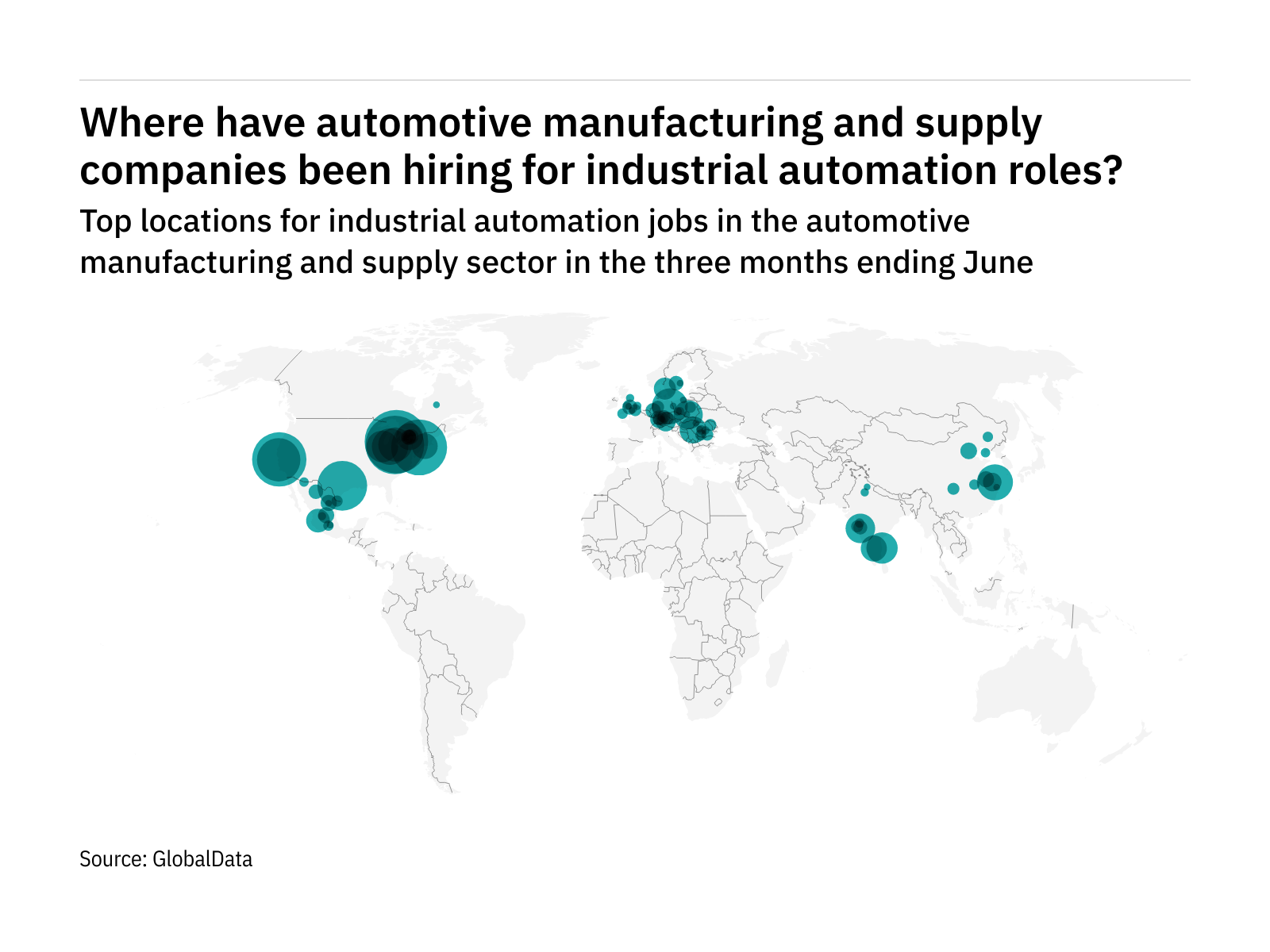
Asia-Pacific was the fastest growing region for industrial automation hiring among automotive industry companies in the three months ending June.
The number of roles in Asia-Pacific made up 9% of total industrial automation jobs – up from 7% in the same quarter last year.
That was followed by Europe, which saw a 1.5 year-on-year percentage point change in industrial automation roles.
The figures are compiled by GlobalData, who track the number of new job postings from key companies in various sectors over time. Using textual analysis, these job advertisements are then classified thematically.
GlobalData's thematic approach to sector activity seeks to group key company information by topic to see which companies are best placed to weather the disruptions coming to their industries.
These key themes, which include industrial automation, are chosen to cover "any issue that keeps a CEO awake at night".
By tracking them across job advertisements it allows us to see which companies are leading the way on specific issues and which are dragging their heels - and importantly where the market is expanding and contracting.
Which countries are seeing the most growth for industrial automation job ads in the automotive industry?
The fastest growing country was India, which saw 4.3% of all industrial automation job adverts in the three months ending June 2021, increasing to 6% in the three months ending June this year.
That was followed by Sweden (up 0.8 percentage points), Mexico (0.5), and China (0.5).
The top country for industrial automation roles in the automotive industry is the United States which saw 68.2% of all roles advertised in the three months ending June.
Which cities and locations are the biggest hubs for industrial automation workers in the automotive industry?
Some 4.6% of all automotive industry industrial automation roles were advertised in Novi (United States) in the three months ending June.
That was followed by Maumee (United States) with 3.9%, Warren (United States) with 3.5%, and Fremont (United States) with 3.3%.





